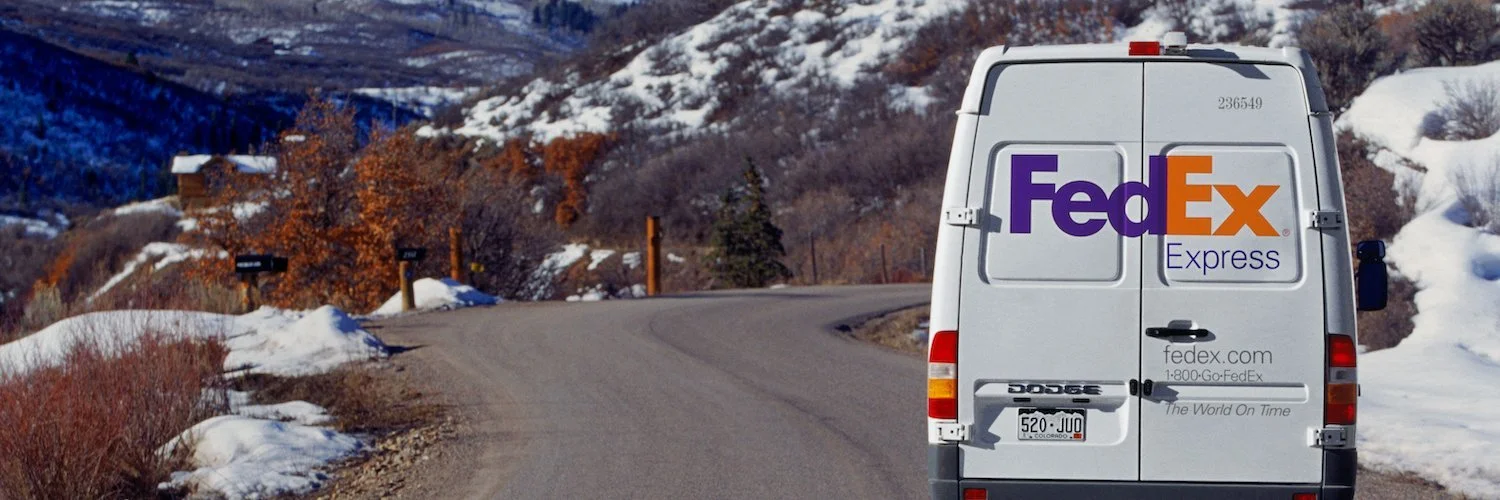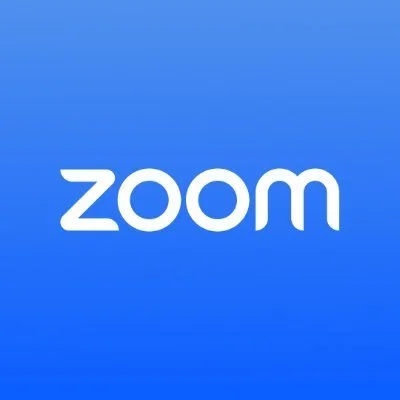How to Create a Brand Promise That Drives Customer Loyalty (7-Step Guide)
That "meh" feeling you get when you look at your brand messaging? The one where everything sounds technically correct but somehow... soulless? It's probably because you're missing something that transforms good brands into unforgettable ones: a proper brand promise.
Most brand promises are absolute rubbish. Generic platitudes that could apply to literally any business in any sector. ("We're committed to excellence!" Yawn.)
In a world where 77% of consumers make purchases based on brand name alone, your brand promise is a very important building block for customer loyalty, team alignment, and – let's be honest – your bottom line.
I've spent years helping brands find their verbal identity, and I can tell you that nothing transforms a business quite like a brand promise that actually means something. One that makes both your team and your customers feel something.
Let’s find out exactly how to do that. ⬇️
What is a brand promise? (Definition + Examples)
A brand promise is the emotional and experiential commitment a brand makes to its customers. It defines what people can consistently expect when interacting with the brand, beyond features or products.
A brand promise isn't a tagline. It's not your mission statement. And it's definitely not that generic "we deliver quality service" nonsense plastered across most websites.
A brand promise is the fundamental experience customers can expect every single time they interact with your business. It's the consistent, authentic commitment that you make – and keep – with everyone who encounters your brand.
It's the emotional commitment you make to your audience. The specific value and feeling they're guaranteed to receive regardless of when, where, or how they engage with you.
Think of it this way:
Your mission statement is about you
Your value proposition is about your products
Your brand promise is about the experience and emotional outcome your customers can bank on
Quick Brand Promise Examples
Mission statement: "To create innovative solutions that empower businesses to thrive." (Yawn. Who isn't trying to do this?)
Value proposition: "Our platform saves marketing teams 15 hours per week through automated reporting." (Concrete, but purely functional.)
Brand promise: "Clarity that builds confidence." (This is what you actually feel after using their service – an emotional outcome.)
What a Brand Promise Is NOT
❌ Not your tagline (though it might inspire one)
❌ Not your mission statement (though they should align)
❌ Not corporate values gathering dust on your 'About Us' page
❌ Not a marketing slogan you change every quarter
✅ IS: The emotional outcome customers can count on every single time
Why Brand Promises Matter for Business Growth
Let's talk numbers that matter to your bottom line ⬇️
Consumer Trust Statistics (2024-2025)
81% of consumers need to trust a brand before purchasing
89% of shoppers remain loyal to brands that share their values
46% of consumers pay more for brands they trust
20% higher market performance for companies with strong, consistent brand promises
The Trust-to-Revenue Pipeline
Trust → Values Alignment → Premium Pricing → Market Outperformance
Your brand promise directly links to revenue because we're drowning in choices. The average person encounters over 5,000 brand messages daily. A clear, compelling brand promise cuts through that noise like nothing else.
Real-World Impact Examples
When you need overnight delivery, who comes to mind? FedEx.
When you want a computer that "just works", who do you think of? Apple.
When you think "safe car", what brand appears? Volvo.
That's not accidental. That's the power of a brand promise that's been consistently delivered.
Where Most Businesses Fail
Most companies fall spectacularly short because they either:
Never clearly define their promise (hoping customers will somehow figure it out)
Make promises they can't keep (hello, customer disappointment)
Keep changing their promise (confusing everyone)
Create generic promises (that sound like everyone else)
Your mission might change as you grow. Your positioning might shift as the market evolves. But your brand promise? That's your North Star – the experience you commit to delivering consistently.
According to the Havas Meaningful Brands Report (2022), 89% of customers remain loyal to brands that share their values. But here's the kicker – they can only connect with those values if they understand what you're actually promising.
💡 Your brand promise needs to be internally understood before it can be externally communicated. If your team can't articulate it, your customers definitely won't get it.
Brand Promise vs Mission Statement vs Value Proposition
Understanding these differences is crucial for creating effective brand messaging:
When to Use Each
Mission Statement: Team alignment, investor presentations, company culture
Value Proposition: Sales pages, product demos, feature comparisons
Brand Promise: Customer experience design, brand guidelines, training materials
7 Steps to Create a Brand Promise That Converts
This framework has helped me create pretty darn powerful brand promises for my clients. Here's exactly how to use it:
Step 1: Understand what your customers really want
Your customers aren't buying your product or service. They're buying a feeling, a status, a solution to a problem that's keeping them up at night.
Action Items:
Conduct customer interviews focusing on emotional language
Analyze reviews and testimonials for phrases like "I finally felt..."
Use social listening tools to understand customer pain points
Survey customers about their desired outcomes (not just features)
💡 Pro Tip: Look for emotional language in reviews. When customers use phrases like "I finally felt confident" or "For the first time, I could relax," they're revealing the emotional benefit they actually bought.
🔍 Research methods that work:
Exit interview analysis – Why did customers leave?
Support ticket mining – What problems come up repeatedly?
Win/loss interviews – Why did prospects choose you vs. competitors?
Social listening – What do they complain about in your industry?
✅ Questions to ask current customers:
What was your biggest fear before working with us?
How do you explain what we do to colleagues?
What would you lose if we disappeared tomorrow?
How do you feel after using our service/product?
What makes us different from [competitor]?
Step 2: Identify your legitimate superpower
What can you genuinely deliver better than 99% of your competitors? Not what you wish you could deliver. Not what your mission statement says. What do you consistently knock out of the park?
Authenticity Check Questions:
Could your fiercest critic dispute this claim?
Do customers already say this is true about us?
Can we deliver this consistently, even on our worst day?
Are we willing to make tough decisions to uphold this?
⚠️ A promise built on wishful thinking will collapse faster than a chocolate fireguard.
Goal: Find the emotional or functional territory your competitors aren't claiming.
🎯 The gap analysis process:
List your top 5 competitors
Extract their explicit and implicit promises
Categorise by emotional benefit (confidence, peace of mind, status) and functional benefit (speed, quality, convenience)
Identify the white space
Example gap found: In the accounting software space, everyone promised "accuracy" and "compliance." My client claimed "confidence" - the emotional outcome of never worrying about your books.
Step 3: Find the Intersection of Desire and Delivery
Your sweet spot is where what customers deeply want meets what you can authentically deliver.
Mapping Exercise:
Column A: What customers deeply want
Column B: What you can authentically deliver
Overlap Zone: Your brand promise territory
Examples:
"24/7 monitoring" → "so that" → "you sleep soundly knowing your business is protected"
"Same-day delivery" → "so that" → "you never disappoint the people you care about"
"Automated reporting" → "so that" → "you look like the strategic leader you are"
Step 4: Craft Your Statement (Clarity Trumps Cleverness)
Create a statement that:
A 12-year-old could understand
Feels emotionally resonant
Distinguishes you from competitors
You could say with a straight face to a skeptical customer
Framework Formulas:
Goal: Structure your promise for maximum impact and memorability.
🏗️ The 3 high-converting formats:
Format 1: Outcome promise
"[Specific result] you can count on"
Example: "Marketing that generates predictable revenue"
Format 2: Transformation promise
"From [current state] to [desired state]"
Example: "From tech complexity to business clarity"
Format 3: Experience promise
"[Feeling] every time you [interact with us]"
Example: "Confidence every time you present to clients"
Step 5: Test It Against Reality (The Brutal Truth Check)
Before committing, test your promise:
✅ Can we deliver this consistently, even on our worst day?
✅ Would customers already say this is true about us?
✅ Can we build systems to ensure this happens every time?
✅ Are we willing to make tough decisions to uphold this?
If you answered "no" to any of these, go back to the drawing board.
Step 6: Create Company-Wide Alignment
Your brand promise is worthless if your team doesn't know it, understand it, and live it.
Alignment Checklist:
Leadership repeatedly communicates the promise
Decisions are measured against the promise
Rewards and recognition reinforce the promise
Systems and processes enable delivering the promise
Hiring criteria include promise alignment
Training programs teach promise delivery
Step 7: Measure and Refine
Track both hard and soft metrics:
Hard Metrics:
Net Promoter Score (NPS)
Customer satisfaction ratings
Customer retention rates
Premium pricing ability
Promise-specific KPIs
Soft Metrics:
Brand association studies
Customer interviews about experience
Social sentiment analysis
Employee understanding surveys
15 high-performing brand promise examples (analysed)
Let's dissect some brand promises that nail it. What makes them effective? How do they drive business results?
🏆 Technology & Software
Slack: "Where work happens"
Why it works: Positions Slack as the central hub, not just another tool. Creates urgency (work doesn't happen without it).
Stripe: "Increase the GDP of the internet"
Why it works: Massive vision that makes customers feel part of something bigger than payments.
Zoom: "Frictionless video communications"
Why it works: "Frictionless" addresses the core pain point of video calls being difficult.
🛍️ E-commerce & Retail
Amazon: "Earth's Most Customer-Centric Company"
Why it works: Clear priority (customer first) and ambitious scope (earth's most).
Warby Parker: "Designer eyewear at a revolutionary price"
Why it works: Combines aspiration (designer) with value (revolutionary price).
Glossier: "Beauty inspired by real life"
Why it works: Authentic, relatable approach vs. unattainable beauty standards.
🏢 Professional Services
McKinsey: "Helping organizations create change that matters"
Why it works: "Change that matters" implies significant, lasting impact.
Mailchimp: "Turn emails into revenue"
Why it works: Direct line from their tool to business outcome that matters.
🏥 Healthcare & Wellness
Calm: "The #1 app for sleep, meditation, and relaxation"
Why it works: Social proof (#1) plus specific benefits for specific outcomes.
Peloton: "Fitness that inspires"
Why it works: Goes beyond physical fitness to emotional benefit (inspiration).
🏦 Financial Services
Square: "Start, run, and grow your business"
Why it works: Complete business lifecycle support, positions Square as essential partner.
Robinhood: "Investing for everyone"
Why it works: Democratizes traditionally exclusive service, inclusive positioning.
🚛 Logistics & Delivery
FedEx: "When it absolutely, positively has to be there overnight"
Why it works: Specific timeframe, emphasizes reliability, emotional stakes ("absolutely").
DoorDash: "Every flavor welcome"
Why it works: Inclusive, celebrates diversity, positions as platform for all restaurants.
🎓 Education & Training
MasterClass: "Learn from the best"
Why it works: Simple, aspirational, positions instructors as the ultimate authorities.
What Makes These Promises Work
✅ Clear (no corporate jargon)
✅ Ownable (competitors would struggle to claim the same territory)
✅ Authentic (plays to actual company strengths)
✅ Customer-focused (addresses real needs or aspirations)
✅ Actionable (guides actual business decisions)
✅ Consistently delivered (the most important factor)
How to Implement Your Brand Promise Strategy
A brand promise gathering dust in your brand guidelines isn't doing anyone any good. Here's how to weave it into every aspect of your business:
Marketing and Communications Implementation
Your promise should influence:
Key messages and positioning
Visual identity and design language
Content creation focus
Channel strategy
Advertising themes
Golden Rule: Show, don't tell. Demonstrate your promise rather than just stating it.
Product Development and Delivery
Your promise should guide:
Feature prioritization
UX/UI decisions
Quality standards
Service design
Performance metrics
Key Question: "Does this product/feature/experience deliver on our promise?"
Customer Experience Design
Your promise must shape:
Customer journey mapping
Service standards
Problem resolution protocols
Touchpoint design
Feedback mechanisms
Magic Question: "At this moment, is the customer experiencing our promise?"
Internal Operations
Your promise should influence:
Hiring criteria
Training programs
Performance metrics
Recognition systems
Decision frameworks
Remember: Your internal culture must support your external promise.
Brand Promise Template
The Brand Promise Canvas
Step 1: Customer Research
What our customers deeply want:
1. ________________________________
2. ________________________________
3. ________________________________
Emotional outcomes they seek:
1. ________________________________
2. ________________________________
3. ________________________________
Step 2: Our Capabilities
What we deliver better than anyone:
1. ________________________________
2. ________________________________
3. ________________________________
Our authentic strengths:
1. ________________________________
2. ________________________________
3. ________________________________
Step 3: Promise Development
Intersection of want + capability:
________________________________
Our brand promise draft:
"________________________________"
Passes the authenticity test? Yes/No
Can we deliver this consistently? Yes/No
Is this emotionally resonant? Yes/No
Does this differentiate us? Yes/No
Step 4: Implementation Planning
How this impacts our:
- Marketing: ________________________
- Product: __________________________
- Customer Service: _________________
- Internal Operations: _______________
Success metrics:
1. ________________________________
2. ________________________________
3. ________________________________
Testing your brand promise: 3 critical questions to ask
Before finalising your brand promise, put it through these ruthless tests:
1. The uniqueness test
If you removed your brand name, could this promise apply to your competitors?
Be brutally honest. If your answer is "maybe" or "yes," your promise isn't distinctive enough. Refine it until it captures something truly unique about your brand experience.
2. The commitment test
Are you willing to make decisions that might be financially painful in the short term to honour this promise?
For example, Patagonia's environmental commitment means they sometimes choose more expensive, sustainable materials. If you wouldn't make similar trade-offs, your promise lacks authenticity.
3. The customer reaction test
When customers hear your promise, do they think, "Yes, that's exactly what I need" or "That's exactly who they are"?
If possible, test your promise with actual customers. Their immediate reaction tells you whether you've hit the relevance mark.
How to measure and optimise performance
Your brand promise is only as good as your ability to track its impact:
📊 Key Performance Indicators (KPIs)
🎯 Conversion metrics
Landing page conversion rate
Trial-to-paid conversion
Sales cycle length
Average deal size
Win rate vs. competitors
❤️ Loyalty metrics
Customer retention rate
Net Promoter Score (NPS)
Customer lifetime value
Referral rate
Repeat purchase rate
🔧 Optimisation techniques
A/B testing your promise
Test these elements:
Promise clarity: Specific vs. broad language
Emotional appeal: Rational vs. emotional framing
Proof elements: Statistics vs. testimonials vs. guarantees
Urgency level: Immediate vs. long-term benefits
Example test: "Marketing that generates predictable revenue" vs. "Turn your marketing into a profit center" - test which resonates better with your audience.
🔄 Quarterly optimisation process
Data Review: Analyse all KPIs vs. baseline
Customer Feedback: Survey customers on promise delivery
Competitive Analysis: Check if competitors have copied or countered
Promise Refinement: Adjust based on learnings
Team Realignment: Update training and processes
When and how to evolve your brand promise
Brand promises aren't meant to change with the seasons. But they're not set in stone either. Here's when and how to evolve yours:
Signs it's time for a promise refresh
Customer needs have fundamentally shifted
Your capabilities have significantly expanded
The promise no longer differentiates you from competitors
You consistently struggle to deliver on the current promise
Market disruption has changed your industry's landscape
Evolution doesn't mean abandonment. The best brand promise evolutions maintain the essence while refreshing the expression or expanding the scope.
How to evolve without losing equity
1. Start with data, not hunches
Gather evidence from multiple sources:
Customer feedback and changing needs
Market and competitor analysis
Internal delivery capabilities
Financial impact projections
2. Identify what to preserve
Before changing anything, get crystal clear on:
What elements of your current promise resonate most
What emotional connections you've built
What distinctive territory you own in customers' minds
3. Test, test, test
Evolution is less risky than revolution. Before a full launch:
Test new promise articulations with loyal customers
Pilot the evolved promise in limited markets or segments
Measure both rational understanding and emotional response
4. Plan a thoughtful transition
Unlike a surprise rebrand, promise evolutions should be:
Transparent (explain the why to customers)
Gradual (phase in the new while respectfully retiring the old)
Consistent (ensure all touchpoints evolve simultaneously)
Example: Mastercard evolved from transaction processor ("The best way to pay") to lifestyle enabler ("Priceless") while maintaining their core promise of seamless commerce. The evolution expanded their territory without abandoning their foundations.
When to use this process: During major strategic shifts, after mergers/acquisitions, when facing significant market changes When to avoid: During temporary market fluctuations, in response to competitor moves, without solid audience research
Promise-making is promise-keeping
In a world where trust is the scarcest resource, your brand promise isn't just marketing – it's your most valuable business asset.
We've fallen into a dangerous pattern where businesses treat promises as aspirational statements rather than binding commitments. But customers haven't fallen for it. They're more skeptical, more demanding, and more vocal than ever before.
The brands that will thrive in this environment aren't the ones making the biggest promises. They're the ones keeping the promises they make – consistently, distinctively, and authentically.
Your brand promise is the bridge between who you are and who your customers need you to be. Build it thoughtfully. Test it thoroughly. Deliver on it religiously.
Because when promise meets delivery, magic happens. Not just for your customers, but for your team, your culture, and ultimately, your bottom line.
Ready to build a brand promise that sets you apart and draws your ideal customers closer? I'll help you discover, articulate, and activate a promise that's uniquely yours – one that both inspires your team and magnetises your market.
Frequently Asked Questions
What's the difference between a brand promise and a tagline?
A brand promise is the fundamental experience customers can expect every time they interact with your brand. A tagline is a short, memorable phrase used in marketing. Your tagline might reflect your brand promise, but they serve different purposes.
How long should a brand promise be?
Keep it concise – ideally 3-7 words that capture the emotional outcome customers can count on. Think "Safety" (Volvo) or "Think Different" (Apple).
Can a brand promise change over time?
While your brand promise should be stable and enduring, it can evolve as your business grows. However, changes should be rare and strategic, not frequent pivots that confuse customers.
How do I know if my brand promise is working?
Track metrics like Net Promoter Score, customer retention, brand association studies, and your ability to charge premium pricing. Also monitor whether customers naturally use language that reflects your promise when describing your brand.
What if my competitors copy my brand promise?
A truly authentic brand promise is hard to copy because it's rooted in your unique capabilities and culture. If competitors try to copy it without the underlying ability to deliver, customers will quickly see through the facade.
Should my brand promise be explicitly stated to customers?
Not necessarily. Many effective brand promises work as internal north stars that guide all customer interactions. The promise should be evident through experience, not just stated in marketing materials.
How do I get my team aligned on our brand promise?
Start with leadership alignment, then cascade through training, hiring practices, performance metrics, and recognition systems. Make the promise part of decision-making frameworks at every level.
What's the biggest mistake companies make with brand promises?
Making promises they can't consistently keep. It's better to under-promise and over-deliver than to set expectations you can't meet.









